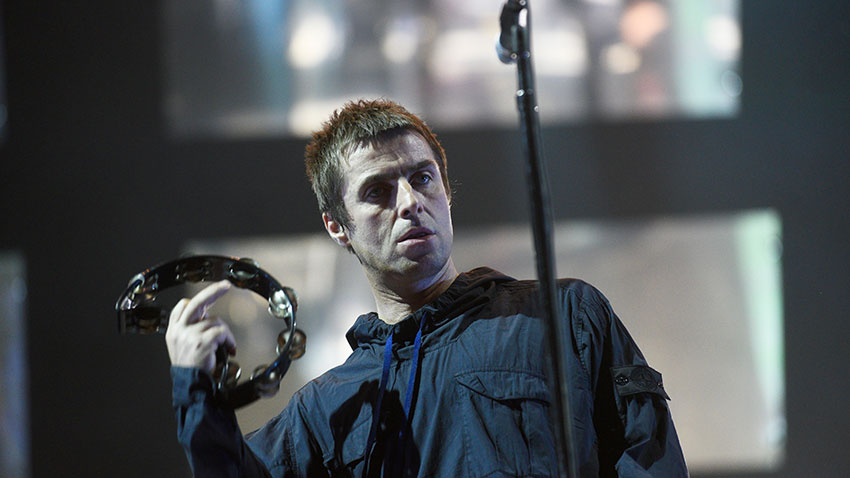ASML’s Christophe Fouquet is leading the company quietly powering the AI boom
When it comes to producing state-of-the-art microchips for artificial intelligence, only one company produces the multimillion-dollar hardware necessary to draw the complex, microscopic designs on silicon needed for the chips to work: ASML. Big chipmakers like Taiwan Semiconductor Manufacturing Co., Intel, and Samsung all rely on the extreme ultraviolet (EUV) lithography technology that the Dutch company provides. No wonder it consistently ranks among the most valuable public companies in Europe. And overseeing ASML, and making sure it remains at the cutting edge of chipmaking technology, is Christophe Fouquet, who’s been CEO of the firm since April. Fouquet’s ascent into the top executive role comes after 15 years at ASML and over 25 in the semiconductor industry—enough time, in other words, to see 10 iterations of Moore’s Law. (For the uninitiated: Moore’s Law states that the number of transistors on a microchip doubles every two years with a minimal rise in cost.) While Fouquet has plenty of time close to ASML’s pioneering lithography technology, his experience isn’t solely on the technical side. He’s also worked in marketing and product management, spending enough time sitting side-by-side with customers to understand their needs, in a close-knit industry that requires careful coordination between chip designers like AI chip powerhouse NVIDIA, chipmakers like TSMC and Intel, critical suppliers like ASML, and the businesses that in turn supply them. “We know each other for many, many years, and we trust each other,” Fouquet says. “I think the word ‘trust’ is very, very important, because the ecosystem is such that if you take anyone out of the ecosystem, the whole thing stops.” Under Fouquet, ASML will also continue to navigate complex geopolitical situations, as the U.S. and its allies impose restrictions on sales of certain chipmaking equipment to China amid security concerns about AI and other technologies. Of course, it’s still an incredibly intellectually stimulating industry in terms of engineering alone, Fouquet says, as befits an arena where the products are expected to double in complexity every year and a half. And a big part of the industry’s enthusiasm today is the promise of AI, which Fouquet compares to the excitement in the early days of the internet and of smartphones. As he said in a recent investor presentation, AI will require further innovation to keep computing hardware affordable and energy-efficient enough to harness its full potential. And while semiconductor industry observers have long speculated about the end of Moore’s Law, as the scale of chips seems to approach the very limits of physics, Fouquet remains bullish, as the industry continues to find new techniques and approaches to make chips continually more powerful. “Sometimes I say, Moore’s Law will only stop when people stop having ideas,” he says. “And I think that has not happened so far.” This story is part of AI 20, our monthlong series of profiles spotlighting the most interesting technologists, entrepreneurs, corporate leaders, and creative thinkers shaping the world of artificial intelligence.

When it comes to producing state-of-the-art microchips for artificial intelligence, only one company produces the multimillion-dollar hardware necessary to draw the complex, microscopic designs on silicon needed for the chips to work: ASML. Big chipmakers like Taiwan Semiconductor Manufacturing Co., Intel, and Samsung all rely on the extreme ultraviolet (EUV) lithography technology that the Dutch company provides. No wonder it consistently ranks among the most valuable public companies in Europe.
And overseeing ASML, and making sure it remains at the cutting edge of chipmaking technology, is Christophe Fouquet, who’s been CEO of the firm since April.
Fouquet’s ascent into the top executive role comes after 15 years at ASML and over 25 in the semiconductor industry—enough time, in other words, to see 10 iterations of Moore’s Law. (For the uninitiated: Moore’s Law states that the number of transistors on a microchip doubles every two years with a minimal rise in cost.)
While Fouquet has plenty of time close to ASML’s pioneering lithography technology, his experience isn’t solely on the technical side. He’s also worked in marketing and product management, spending enough time sitting side-by-side with customers to understand their needs, in a close-knit industry that requires careful coordination between chip designers like AI chip powerhouse NVIDIA, chipmakers like TSMC and Intel, critical suppliers like ASML, and the businesses that in turn supply them.
“We know each other for many, many years, and we trust each other,” Fouquet says. “I think the word ‘trust’ is very, very important, because the ecosystem is such that if you take anyone out of the ecosystem, the whole thing stops.”
Under Fouquet, ASML will also continue to navigate complex geopolitical situations, as the U.S. and its allies impose restrictions on sales of certain chipmaking equipment to China amid security concerns about AI and other technologies.
Of course, it’s still an incredibly intellectually stimulating industry in terms of engineering alone, Fouquet says, as befits an arena where the products are expected to double in complexity every year and a half. And a big part of the industry’s enthusiasm today is the promise of AI, which Fouquet compares to the excitement in the early days of the internet and of smartphones. As he said in a recent investor presentation, AI will require further innovation to keep computing hardware affordable and energy-efficient enough to harness its full potential.
And while semiconductor industry observers have long speculated about the end of Moore’s Law, as the scale of chips seems to approach the very limits of physics, Fouquet remains bullish, as the industry continues to find new techniques and approaches to make chips continually more powerful.
“Sometimes I say, Moore’s Law will only stop when people stop having ideas,” he says. “And I think that has not happened so far.”
This story is part of AI 20, our monthlong series of profiles spotlighting the most interesting technologists, entrepreneurs, corporate leaders, and creative thinkers shaping the world of artificial intelligence.






















